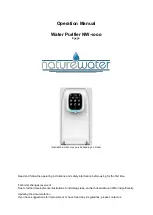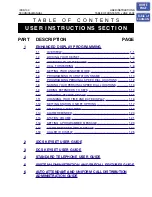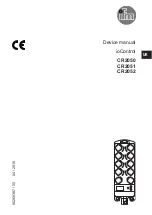
Einbau · Installation · Installation
backflow preventer unit (8) into the flange of
the pump. Fix the complete pump in the
housing (1) with both screws (9), insert
along the inside surface of housing and
place on the suspension flange (14).Aslight
tilt of the pump facilitates its installation into
the suspension flange (14). At last, fix the
pump to the housing with both hexagon
bolts (10). Insert the electrical cable and the
plug through the blank pipe (drawing 3) with
a wire and branch into the stocket. Fill up the
housing with water and test the automatic
float (5). Put on the locking cover plate (12)
and the grate (11); it is important that the
cover plate is situated over the pump.
Particular prescriptions of the Institut
for Technical Setting, Berlin:
Basement sewers can be used in a house-
drainage system to lift wastewater which is
not very dirty, however, not coming from sa-
nitary installation (WC), according to the
prescriptions of the effluent standard DIN
1986.
Pressure pipes must always be lead over
local backwater level. The link to the pres-
sure pipe must be made with an elbow of
45°. For installation in buildings, refer to the
effluent standard DIN 4109 - protection
against noise in surface engineering.
Maintenance:
Clean the pump and wash the infall ope-
nings with clear water at least twice a year.
Never open the pump by yourself (only by
an expert), because in the event of wrong
handling, the sealing of the pump can be da-
maged and oil could get into the wastewa-
ter. According to the prescriptions for instal-
lation of drainage systems, no fecal sub-
stances and no inflammable or explosive li-
quids must be extracted by the wastewater
lifting system UNIVA-Aqualift.
Attention:
To be used for swimming-pool
and garden ponds as well as the protected
area around them, only if they are establi-
shed according to VDE 0100 § 49d. Contact
your electrician.
F
1. Avant d’installer le poste de relevage
UNIVA-Aqualift, contrôler que les pièces
n’ont été endommagées par le transport.
2. Réduction (2) à scier selon le branche-
ment du tuyau pression souhaité. Placer le
joint (3) dans la rainure, graisser et em-
boîtier à Iʼouverture du boîtier. Lors de cette
opération, bien observer que la partie plate
est en bas (voir schéma 1). En collant avec
de la colle PVC, le joint (3) peut être sup-
primé.
3. Apporter la sortie de câble (7) au boîtier
(1) ou à la rehausse réf. 32500 selon „les in-
structions de montage en rouge pour le rac-
cord dʼentrée ou de sortie“ et visser le rac-
cord dʼalimentation (7) DN 50 (voir schéma
3). Fixer les conduites dʼarrivée des dou-
ches, machines à laver ou sortie de cave et
les amener aux raccords (13) de droite, de
gauche ou du milieu DN 50, 70 ou 100.
4. Après branchement de Iʼensemble de la
tuyauterie, placer le boîtier (1) dans un
moule de béton.
Pour une éventuelle mise
8






































